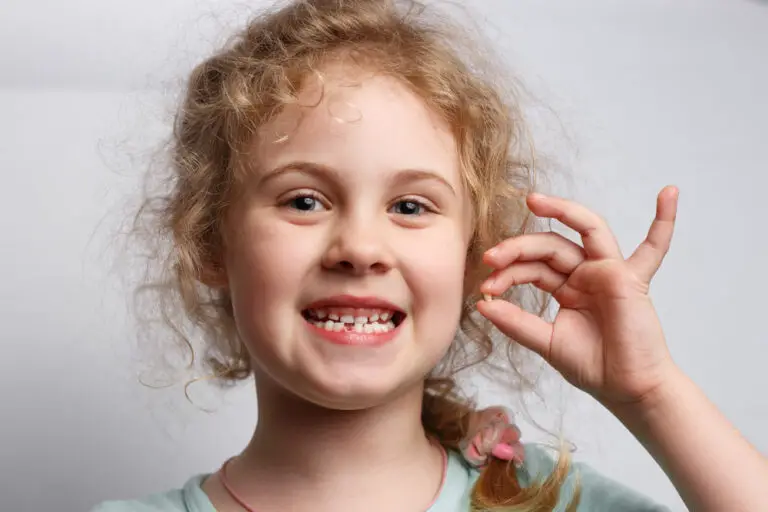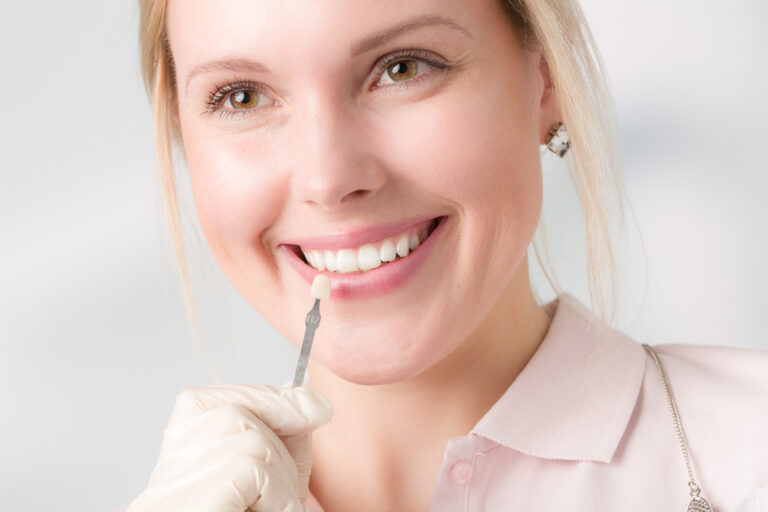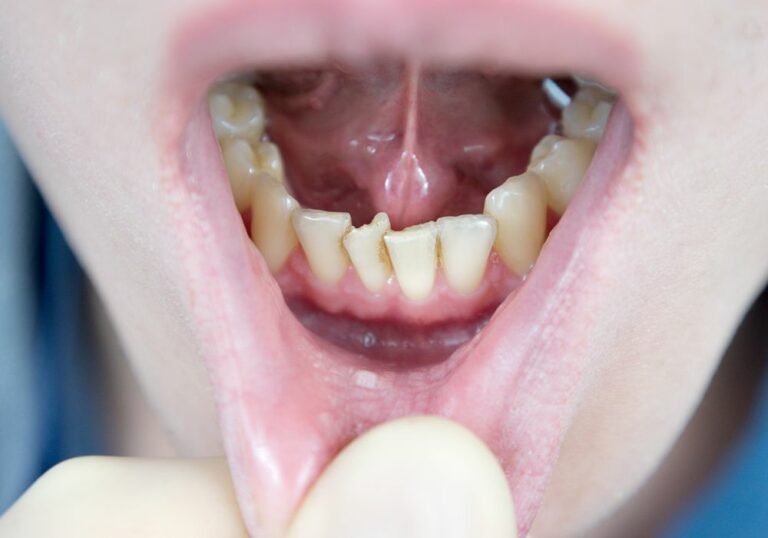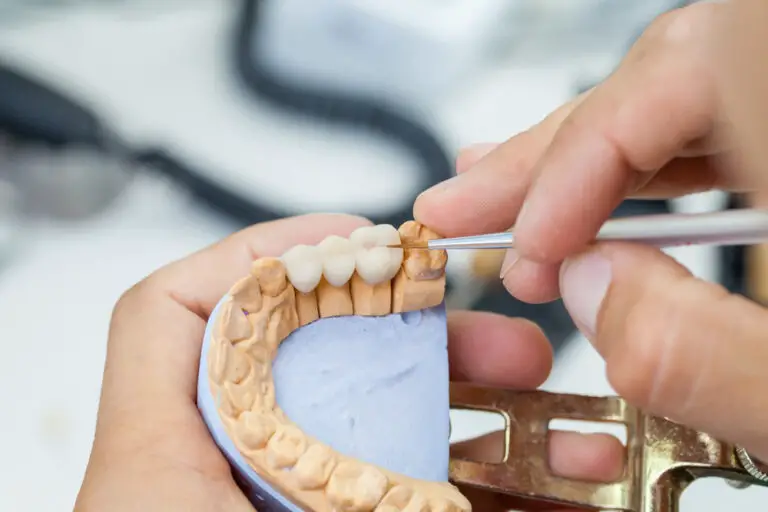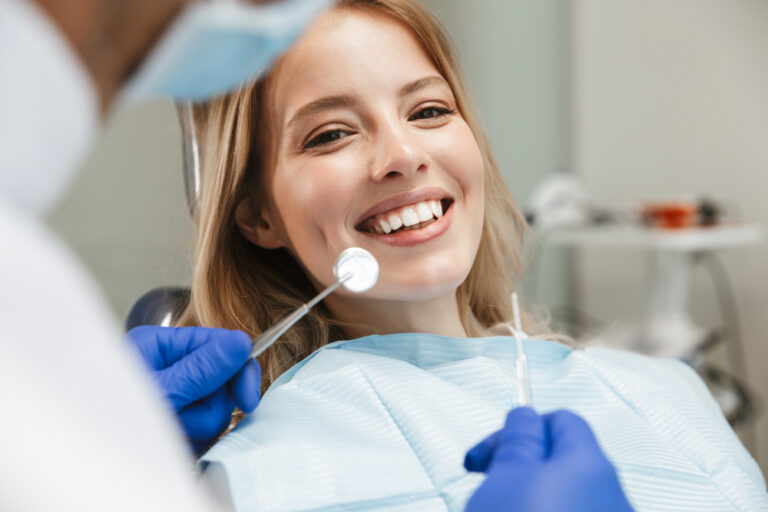Teeth grinding, also known as bruxism, is a common condition affecting millions worldwide. It involves clenching or grinding one’s teeth during sleep or while awake. Though often dismissed as a harmless habit, bruxism can lead to various oral health complications when left unchecked. This extensive article dives deep into the causes, symptoms, diagnosis and treatments for teeth grinding.
What is bruxism?
Bruxism refers to excessive teeth grinding or jaw clenching. It is categorized as a parafunctional activity, meaning it serves no purpose and can be detrimental. Bruxism occurs unconsciously, either while awake or asleep.
Sleep bruxism
Sleep bruxism involves grinding or gnashing of the teeth during sleep. Episodes usually happen during non-REM sleep stages 1 and 2. Sleep bruxism is considered a sleep-related movement disorder. Around 8-10% of adults and 14-20% of children are affected by sleep bruxism.
Awake bruxism
Awake bruxism refers to excessive clenching or other parafunctional jaw activities when conscious. It is less common than sleep bruxism, occurring in around 20% of the general population. Awake bruxism often arises from stress, anger, concentration or anxiety.
Causes of bruxism
While bruxism can arise on its own, certain factors are known to increase the risk:
1. Genetics
Bruxism tends to run in families, indicating a possible genetic component. Certain gene mutations seem to predispose some people to grinding behaviors. The CATECHOL-O-METHYLTRANSFERASE gene is one that has been potentially linked to bruxism.
2. Neurological issues
People with Parkinson’s disease, Huntington’s disease, multiple sclerosis, dementia, and cerebral palsy have a higher incidence of bruxism. The abnormal muscular activity from these conditions can prompt grinding. Tourette’s syndrome also shows increased teeth grinding.
3. Medications
Antidepressants, amphetamines for ADHD, dopaminergics and antipsychotic drugs may instigate bruxism as a side effect. Cocaine and ecstasy use can also trigger grinding. Considering alternate medications or lowering doses can help.
4. Sleep disorders
Conditions like sleep apnea, snoring and restless leg syndrome disrupt normal sleep patterns. Bruxism may occur as the body tries to unconsciously reopen obstructed airways. Treating the primary sleep disorder can reduce bruxism.
5. Psychosocial factors
Two major risk factors for teeth grinding are stress and anxiety. Bruxism may act as an involuntary coping mechanism for built-up tensions. Stressful life events, work pressures, financial troubles or relationship issues often precede bouts of grinding. An aggressive, competitive or perfectionist personality also raises bruxism risk.
6. Gastrointestinal issues
Acid reflux, bloating, constipation and other GI issues can prompt bruxism, especially during sleep. The discomfort makes it hard to get comfortable and strains the jaw. Treating reflux and improving sleeping positions can help reduce grinding.
7. Smoking and alcohol
Nicotine from smoking and excessive alcohol use are both tied to increased bruxism. Tobacco and alcohol affect neurotransmitters in a way that raises teeth grinding risk. Limiting evening alcohol and quitting smoking may help minimize bruxism.
8. Dental factors
Problems like misaligned bite, crooked teeth, malformed jaw, dental restorations and TMJ dysfunction alter occlusion and put strain on the jaw, potentially triggering bruxism. Addressing these issues can relieve discomfort that leads to grinding.
Signs and symptoms

The main symptoms caused by bruxism include:
1. Headaches
Frequent morning headaches are a hallmark symptom of sleep bruxism. Clenching the jaw muscles overnight strains the head and neck area. The result is aching, throbbing headache pain around the temples that may radiate to the back of the head.
2. Facial pain
The constant tensing of jaw muscles prompts pain in the cheeks, ear, jaws and neck. Bruxism-related migraines also cause facial and head pain along with nausea or light sensitivity. These symptoms may linger through the day post grinding episodes.
3. Tooth damage
Excessive grinding erodes enamel, exposing sensitive dentin. This makes teeth more susceptible to cavities, cracks, fractures, infection, the need for crowns, and even eventual tooth loss in severe bruxism cases.
4. TMJ dysfunction
Strain on the temporomandibular joint from repetitive grinding leads to issues like pain, clicking, popping and locking of the jaw. Inflammation and arthritis can develop in this hinge joint over time.
5. Cheek or gum soreness
Some bruxism patients unconsciously chew the inside of their mouth. This can prompt calluses and sore spots on the cheeks or gums. Biting the tongue is also common.
6. Jaw tightness
After a night of grinding, patients report sore jaw muscles with pain and tightness. This makes it difficult to open the mouth fully. The muscle spasms may persist through the next day.
7. Sleep disruption
A sleep partner may notice loud grinding sounds that disturb their own rest. Some patients don’t get deep enough sleep due to unconsciously tensing their jaw at night. This contributes to daytime fatigue.
Diagnosing bruxism
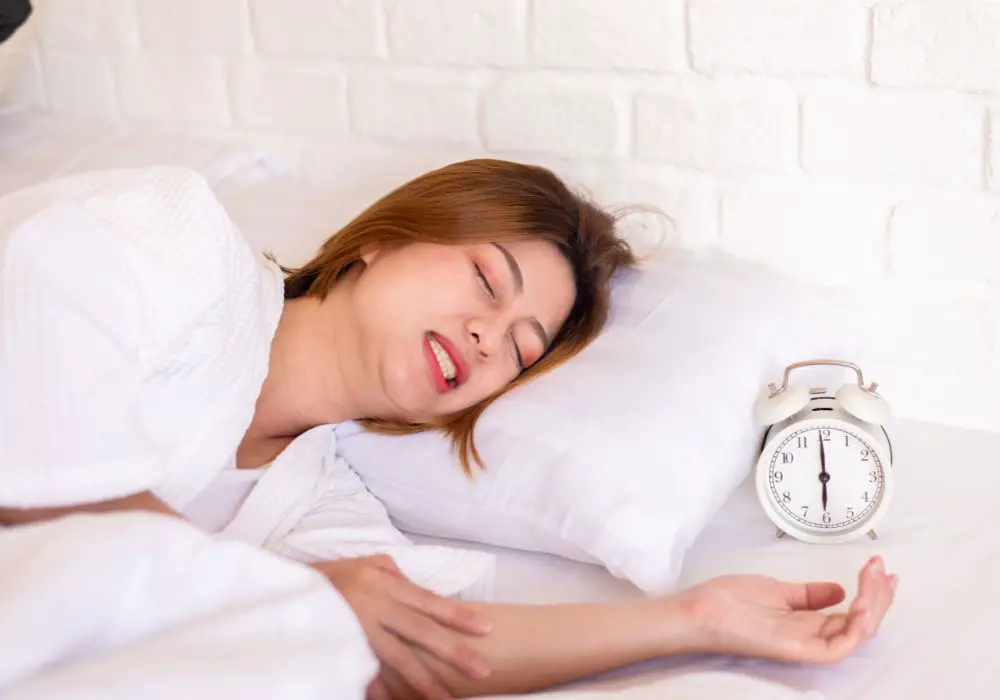
Bruxism is typically diagnosed based on a clinical exam, patient history, and certain diagnostic tests:
1. Clinical examination
The dentist checks for telltale signs of bruxism like:
- Abnormal tooth wear and damage
- Face, jaw, or neck muscle tenderness
- Cheek, lip or tongue calluses and indentations
- Clicking, popping jaw joints
- Headache and facial pain
- Salivary buildup
They may ask the patient to open and close their mouth to check for range of motion and discomfort.
2. Medical history
The dentist enquires about the patient’s general health, medications, sleep patterns, and lifestyle. Questions about smoking, alcohol use, stress levels and daily habits give context about bruxism risk factors. Past dental work and family history provide insight as well.
3. Sleep partner reports
Bed partners often notice or get woken up by the sounds of grinding. Their observations help identify sleep bruxism.
4. Dental imaging
X-rays allow the dentist to check for bone and tooth root damage, apical lesions, impacted teeth, jaw cysts, and other sources of facial pain that may be misdiagnosed as bruxism.
5. Bite analysis
Dental impressions of the teeth are measured against the jaw’s bite pattern. This helps pinpoint misalignments that could be causing discomfort and bruxism.
6. Muscle activity monitoring
Electromyography sensors can measure abnormal electrical activity in strained jaw muscles. This confirms a bruxism diagnosis.
7. Sleep study
Polysomnography involves monitoring brain waves, heart rate, muscle activity and breathing overnight. It definitively diagnoses sleep bruxism and checks for other sleep disorders.
8. Home sleep monitors
Small devices worn on the finger or head can also track sleep quality and grinding motions through the night to help diagnose sleep bruxism.
Bruxism treatment approaches
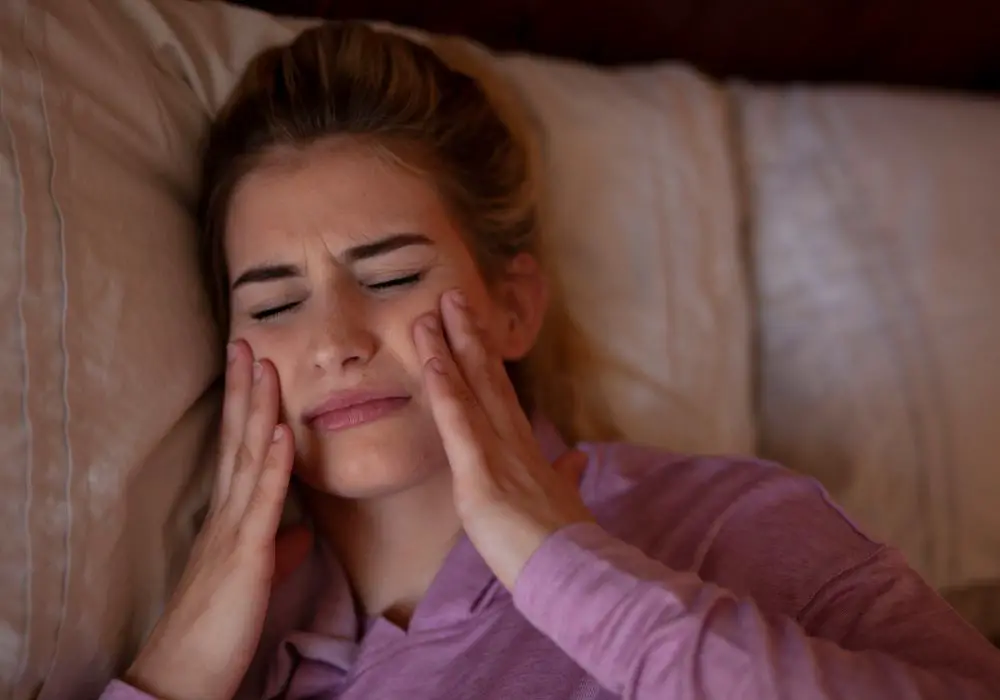
The main bruxism treatment goals are to protect tooth surfaces from damage, reduce pain, and minimize grinding habits. Options include:
Dental treatments
- Oral splints and mouthguards – These coverings cushion teeth from grinding forces and prevent wear and tear. They are the most common treatment option.
- Dental repair – Restorations like crowns, fillings and implants can rebuild and replace teeth damaged by bruxism.
- Tooth extractions – Loose or fractured teeth may need extraction to prevent decay and infections.
- Botox injections – Botox can temporarily paralyze the jaw muscles that control chewing. The effects wear off after 3-4 months.
- Occlusal adjustment – Selectively grinding down tooth surfaces can improve bite alignment and reduce bruxism arising from discrepancies.
Medical treatments
- Muscle relaxants – Medications like benzodiazepines help relieve muscle tightness and reduce grinding behaviors at night. But these carry risks of dependency.
- Stress management – Psychotherapy, hypnosis, meditation and relaxation techniques help reduce emotional-driven bruxism. Exercise is also beneficial.
- Physical therapy – Massage, ultrasound, cold therapy, stretches and exercises can relieve jaw muscle pain and spasms.
- Sleep studies – Diagnosing and treating sleep disorders like apnea that may be prompting bruxism is beneficial.
- Medication adjustment – Lowering the dose or switching medications known to cause bruxism may provide relief.
- Biofeedback – Using techniques and devices to recognize jaw muscle activity helps patients consciously control clenching urges.
Home remedies for bruxism
Alongside professional treatment, certain self-care methods can minimize bruxism:
- Apply warm compresses and massage the face and jaw to relax muscles
- Avoid chewing gum or pencils which overworks the jaw
- Practice stress relief techniques before bed like yoga or meditation
- Take OTC pain relievers like ibuprofen to relieve aching jaws
- Avoid alcohol before bed since it increases grinding
- Train yourself to rest your tongue between teeth to detect clenching
- Get a custom night guard from your dentist to protect your teeth
- Try cognitive behavioral therapy exercises to reduce stress and anxiety
- Maintain proper sleep hygiene like a consistent bedtime routine
- Do chin tilts, shoulder rolls and jaw stretches to relieve muscle tension
However, worsening or severe symptoms warrant medical attention. Home remedies should not replace professional treatment.
Long-term complications of bruxism
Leaving bruxism unchecked can lead to worsened bite problems, headaches, and progressive tooth damage:
- Severe tooth erosion and eventual tooth loss
- Temporomandibular joint arthritis and disc displacement
- Speech difficulties and trouble opening the mouth fully
- Tooth abscesses, cysts and periodontal disease
- Persistent morning headaches and migraines
- Deep jaw muscle strain resulting in spasms and locked jaws
- The need for extensive dental work like crowns, implants and root canals
- Insomnia and impaired sleep quality
- Problems with chewing and swallowing food
Seeking timely treatment prevents extensive dental repair needs and permanent bruxism damage.
When to see a doctor immediately
Prompt emergency dental care is required for:
- Sudden chipped or knocked-out tooth
- Heavy tooth or gum bleeding that doesn’t stop
- Severe throbbing jaw and face pain
- Swelling in the gums, cheeks or jaw area
- Difficulty opening your mouth fully or speaking
- High fever, chills and pus discharge signaling infection
These symptoms indicate a dental emergency like an abscess, cellulitis or osteomyelitis which need urgent care. Antibiotics and tooth extractions may be necessary.
Can bruxism be cured?
There is no definitive cure for bruxism currently. The condition may go into remission but can get re-triggered by factors like stress, medications, dental issues or sleep disorders. Treatment focuses on protecting the teeth, managing pain, and reducing grinding through dental appliances, therapy, and medication. Controlling underlying issues like sleep apnea and heartburn can help minimize bruxism recurrence. But with proper management, symptoms can be kept under control.
Conclusion
Although bruxism has no single cause, multiple factors like genetics, anxiety, dental problems and neurotransmitter imbalances play a role. While not completely curable, teeth grinding is highly treatable. Using mouth guards, addressing related health issues, and making lifestyle changes helps control bruxism. With vigilant monitoring and a multi-pronged approach to care, people can safeguard their oral health against damage from chronic grinding.
Bruxism FAQs
Here are answers to some frequently asked questions about teeth grinding:
1. At what age does bruxism usually start?
Bruxism can begin at almost any age. It emerges in about 40% of children, mostly around ages 2 to 6 years when baby teeth erupt. In adults, bruxism often starts between ages 30 to 50.
2. Can you grind your teeth while awake?
Yes, awake bruxism is quite common. Around 20% of people report clenching their teeth during the day. Stress, anxiety, anger, hyperactivity or concentration can trigger bruxism episodes while conscious.
3. What’s the link between bruxism and headaches?
Because the strong jaw muscles are constantly tensed and strained from grinding, patients often experience chronic tension headaches around the temples. These muscle tension headaches may spread to the back of the head. Migraines can also arise from bruxism.
4. How can you stop grinding teeth at night?
Using a custom night guard cushioning the teeth helps prevent damage from nighttime grinding. Improving sleep quality, cutting back on evening alcohol, and managing stress levels with therapy and meditation can reduce bruxism. Medication adjustments may also help if drugs are causing grinding.
5. Can teeth grinding eventually cause tooth loss?
In severe bruxism cases, years of grinding can destroy tooth enamel, expose dentin, and cause abscesses or fractures that lead to loose, infected teeth that may need extraction. Prompt treatment reduces this risk of eventual tooth loss due to damage.


